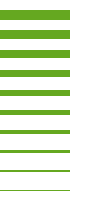https://doi.io-warnemuende.de/10.12754/msr-1993-0006
doi:10.12754/msr-1993-0006
© Author(s) 1993. This work is distributed
under

Dieses Werk ist lizenziert unter einer Creative Commons Namensnennung - Nicht kommerziell - Keine Bearbeitungen 4.0 International Lizenz.
Physicochemical modeling of the Baltic Sea water-sediment column : I. Reference ion-association models of normative seawater and of Baltic sea brackish waters at salinities 1 - 40 ‰, 1 bar total pressure and 0 to 30 °C temperature (system Na-Mg-Ca-K-Sr-Li-Rb-Cl-S-C-Br-F-B-N-Si-P-H-O)
Abstract. Computer thermodynamic modeling by means of dual minimization of total Gibbs free energy (IPM algorithm and SELEKTOR++ software, Karpov et al., 1993; Karpov, 1981) offers new possibilities to quantify the chemical processes that occur in stratified brackish basins such as the Baltic Sea. Unlike many widespread model codes, the dual minimization method treats pH, Eh or partial pressures of gases as functions of P,T and bulk chemical composition rather than as control variables of aqueous system. This leads to more consistent and sensitive models of speciation, mineral solubilities, redox changes etc. in geochemical systems. This publication presents: the ion-association model of aqueous electrolyte in the system Na-Mg-Ca-K-Sr-Li-Rb-Cl-S-C-Br-F-B-N-Si-P-H-O of major components of seawater, including both sulfate and chloride ion pairing, with parameters of modified Debye-Hueckel equation to calculate free activity coefficients; corresponding set of the apparent partial molal Gibbs free energies of formation of aqueous species, gases and minerals (based upon the SUPCRT92 dataset (Johnson et al., 1992) and association constants from Millero and Schreiber, (1982)), tabulated for P = 1 bar and T from 1 to 30°C; reference bulk chemical compositions of normative seasalt; air; average Baltic river salt and organic matter; extended linear mixing equations to specify the models of normative marine and brackish water bodies at chlorinity range 0.1 - 19 ‰. The thermodynamic models of metastable normative seawater, as well as Baltic brackish waters were calculated. Thermodynamic values for some carbonate, bicarbonate and borate ion pairs were corrected for better agreement with normative seawater carbonate system parameters. Comparisons of calculated and reference total and mean activity coefficients, association constants, solubilities of atmospheric gases as well as their temperature and salinity dependencies show good agreement, and therefore - internal consistency and validity of the model at salinities 1 to 40 ‰. The calculated limit solubilities of carbonates (including Mg-calcite), quartz, and phosphates also show good agreement with literature data. A series of equilibria was calculated representing the main water layers of the generalized Baltic Sea water-sediment profile (Gotland Deep). They show good agreement with known profiles of pH, dissolved O2 H2S, P, CO2 etc. across the main halocline and chemocline. This set of thermodynamic models therefore provides a basis for further modeling of Fe, Mn, nutrients and heavy metals cycling in sea-, lake- and porewaters, authigenic mineral precipitation and dissolution, with various environmental and ore-formation implications.
